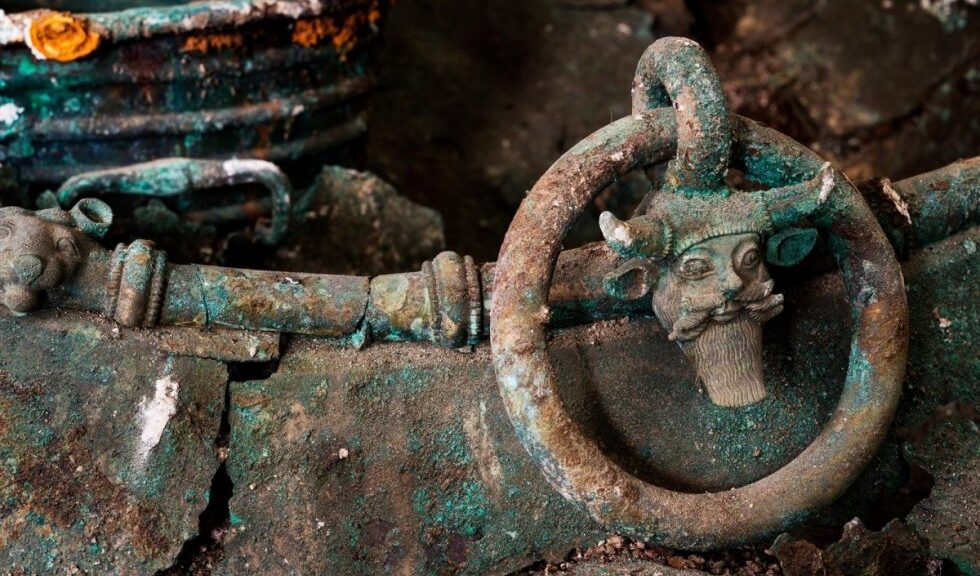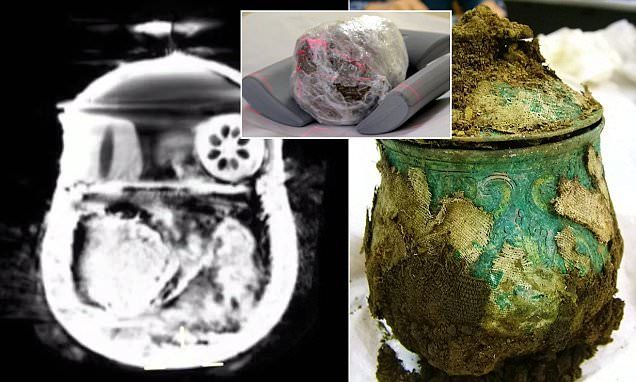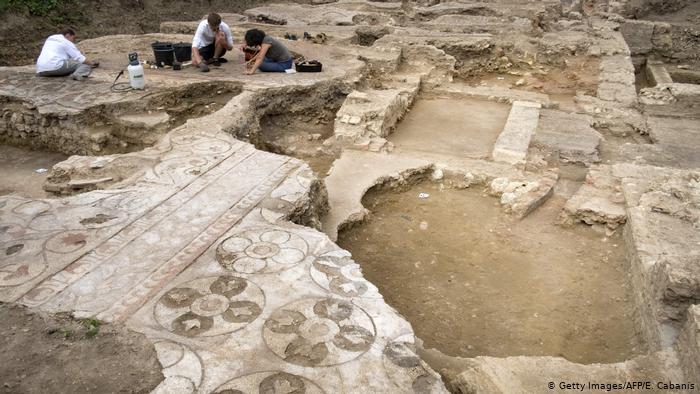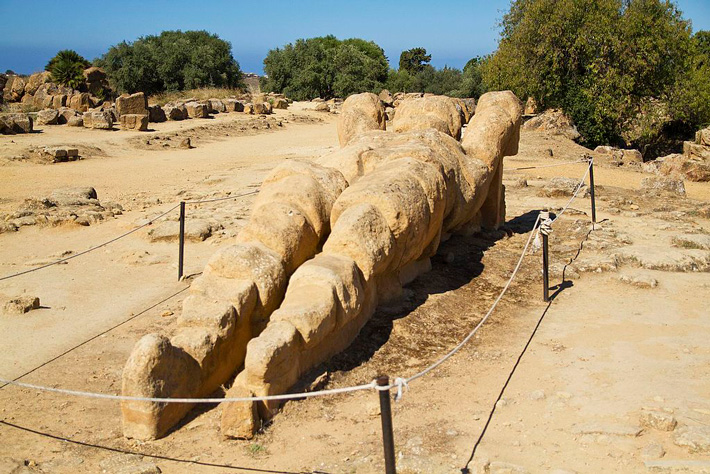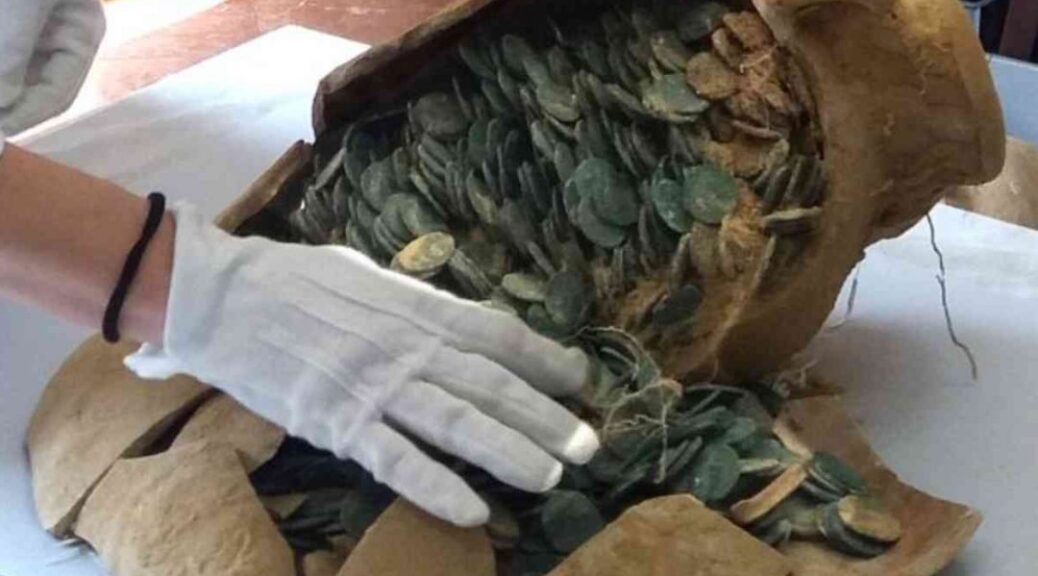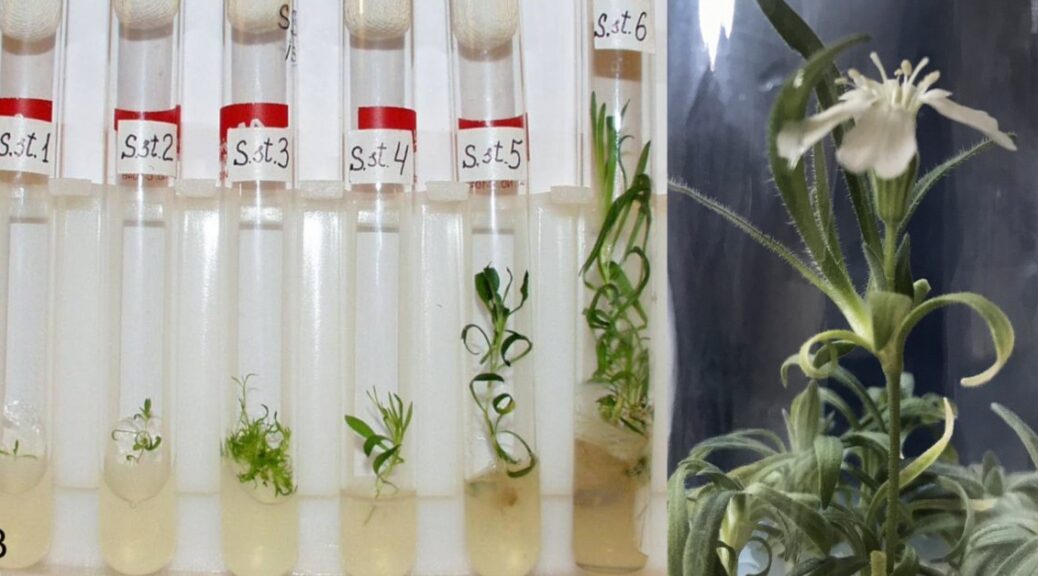Lavau Celtic Prince: 2,500-year-old royal tomb starts to reveal its secrets
The eastern village of Lavau became world-renowned when archeologists found the tomb of the ancient Celtic prince from the 5th century BCE.
As it is now known, the tomb of the Prince of Lavau holds many mysteries that archaeologists have sought to uncover during the last two years. Some of the stunning artifacts recovered next to the deceased have now be sent to a French lab for analysis – and the first results are starting to emerge.
A number of objects, including the prince’s belt, appear to be extremely valuable as they are unique. Other artifacts bear witness to the cultural exchanges which took place at the time between different civilizations.
A lucky discovery
Archaeologists from the National Institute of Preventive Archaeology (INRAP) were asked to search a site on the outskirts of Lavau, in the heart of a small business industrial park, before construction works could be given the go-ahead.
After finding well-preserved Greek and Etruscan artifacts, the French state ordered a more detailed exploration of the area.

The archaeologists ended up discovering beautiful artifacts from the 5th century BCE, starting with a bronze cauldron ornamented with the head of the god Dionysus.
The remains of the prince were found a little later, laid out on his chariot. The skeleton was still wearing the same fine gold jewellery he was buried with.
This was considered to be the most important archaeological discovery made in France in recent decades – comparable to the 1953’s discovery of grave belonging to the so-called ‘Lady of Vix’.

Archaeologists have started to document some of the artifacts, using X-ray radiography and tomography as well as 3D photography to gather information about their composition and morphology – and to learn more about their state of conservation.
Elaborate objects in a multicultural world
So far, X-ray radiography shows that the belt worn by the prince is decorated with threads of silver, assembled together to form Celtic motifs. This is a unique object, as none similar has ever been recovered elsewhere before.
Furthermore, an analysis of the metals in the bronze cauldron – one of the most elaborate artifacts recovered from the grave – suggests that the people who created it perfectly mastered smelting and engraving techniques.
More importantly, perhaps, 3D photography and chemical analyses of the objects reveal influences from different cultures in the way they were decorated. For instance, a large jar used to pour wine is made up of Greek-style ceramic and decorated with golden Etruscan motifs and silver Celtic designs.

These findings reveal that cultural and economic interactions were taking place between the Celtic and Mediterranean worlds at the time the Lavau Celtic Prince was alive.
Analyses will go on until 2020, to try and find out more about the prince’s identity and to learn more about the origins of all the objects he had taken with him in the afterlife.
Already, the researchers have solved one of the most important mysteries they had been confronted with after discovering the tomb – they showed that the deceased was indeed a prince and not a princess. While golden jewels recovered on the skeleton could have belonged to a female, the shape of the pelvic bones suggest he was a male.

